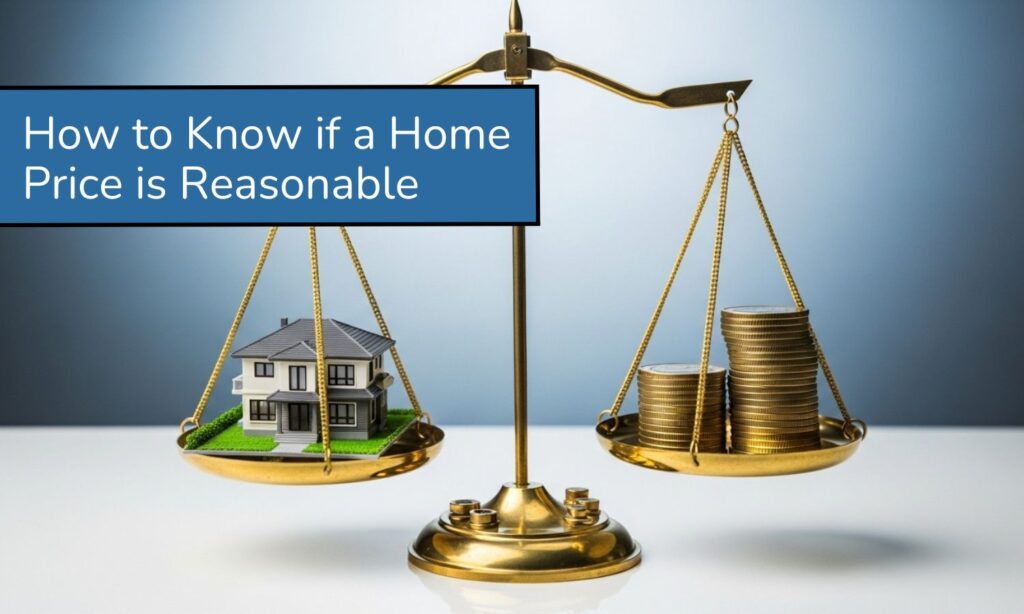You’ve done it. After weeks of searching, you’ve finally found the perfect house with a great kitchen, the backyard of your dreams, and it’s in the right neighborhood. The excitement is overwhelming, but then a single, daunting question creeps in and brings on a wave of anxiety: “Is the price fair?”
Determining if a home’s price is reasonable is one of the most critical and challenging steps for any homebuyer. A price tag is just a number; its real value is a complex equation of hard data, current market forces, and the unique details of the property itself. This guide will demystify the process. We’ll break down how to analyze a home’s price like a pro, look beyond the listing number, and feel confident that you’re making a smart, well-informed offer.
The Foundation of Fair Price: Comparative Market Analysis (CMA)
The single most important tool for determining a fair price is the Comparative Market Analysis, or CMA. This is the first thing any real estate professional will do. A CMA is a detailed comparison between the house you’re interested in and similar properties, known as “comparables” or “comps,” that have recently sold in the same area.
To be effective, the comps must be truly comparable. Here’s what to look for:
- Location: The properties should be in the same neighborhood, ideally within a half-mile radius and zoned for the same schools.
- Recency: The sales should be recent, typically within the last three to six months. Real estate markets can change quickly, so older sales are less relevant.
- Similarity: The homes must be comparable in their core features, including square footage, the number of bedrooms and bathrooms, lot size, and the year they were built.
- Condition: This is a crucial detail. A home with a 1980s kitchen isn’t a good comp for one with a brand-new, high-end renovation. The level of updates and overall maintenance must be similar.
While public websites can provide some of this data, an experienced agent has access to the full MLS database. More importantly, they have often been inside many of the comparable homes, providing an invaluable layer of insight that goes far beyond what numbers on a screen can tell you.
Looking Beyond the Comps: Key Factors that Influence Value
A Comparative Market Analysis provides the data-driven foundation for determining a home’s value, but it’s not the whole story. Several other factors must be weighed to understand if a specific listing price is reasonable and if it is an amount you want to spend.
Market Temperature: Is it a Buyer’s or Seller’s Market?
The overall health of the local real estate market has a huge impact on price.
- Seller’s Market: When there are more buyers looking for homes than there are properties for sale (low inventory), sellers have the advantage. In this environment, it’s common for homes to sell at or even above the asking price due to competition. A “reasonable” price might be at the very top of the value range.
- Buyer’s Market: When there are more homes for sale than there are buyers (high inventory), buyers have more negotiating power. In this case, a reasonable offer might be justifiably below the list price.
The Home’s Unique Story: Condition and Features
No two homes are identical. A higher price might be perfectly reasonable if justified by a new roof, an updated HVAC system, or a high-end kitchen remodel. Conversely, a price that seems low might not be a bargain once you factor in the thousands of dollars needed for necessary repairs. Desirable extras, like a stunning view, a swimming pool, a three-car garage, or a beautifully finished basement, all add legitimate value that a simple price-per-square-foot calculation won’t capture.
The “Micro” Location
We all know the mantra “location, location, location,” but it goes deeper than just the neighborhood. Where a home sits within that neighborhood matters immensely. Is it on a busy main road or a quiet, private cul-de-sac? Does it back up to a peaceful park or a noisy commercial building? Proximity to top-rated schools, walking trails, and popular amenities can also command a premium price compared to a similar home just a few blocks away.
Red Flags: When a Price Seems Too Good (or Bad) to Be True
Sometimes, a home’s price tag stands out from everything else on the market. This should always prompt a closer look.
- Priced Well Below the Comps: An unusually low price isn’t always a lucky find. While it could be a strategic move by the seller to spark a bidding war, it can also be a warning sign of significant hidden issues with the property. Proceed with caution and a thorough inspection.
- Priced Well Above the Comps: If a home is priced significantly higher than similar sold properties, you need to ask why. Is the seller simply unrealistic? Or are there truly exceptional, premium features that might justify the cost? Scrutinize that justification carefully to ensure you aren’t overpaying.
- High “Days on Market” (DOM): The DOM tells you exactly how long a property has been listed for sale. If a home has been sitting on the market for weeks or months while others are selling, it’s a strong signal that the market has collectively decided the price is too high.
Conclusion: Making Your Decision with Confidence
Determining if a home’s price is reasonable is a blend of art and science. It begins with the hard data of a Comparative Market Analysis, but it doesn’t end there. By layering on the context of the current market, factoring in the home’s unique condition and specific location, and keeping a sharp eye out for red flags, you can move from uncertainty to clarity.
Understanding a home’s price isn’t a mystery; it’s a skill that protects you from overpaying and helps you recognize a true value when you see one. While these tools will empower you as a buyer, the expertise of a professional real estate agent is what ties it all together. They can interpret the nuances of the data, provide insight into the neighborhood you can’t find online, and guide you through the negotiation process.
If you’re ready to find a great home at a fair price in the Tri-Cities area, contact the Kenmore Team. We provide the expert analysis and dedicated guidance you need to invest with confidence.



